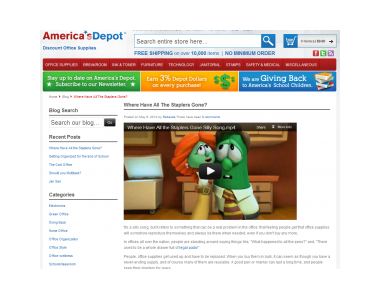Your cart is currently empty!

Planning a Vlog
Blogs often contain videos these days, but what about the vlog — a blog that’s all videos? How can you plan for success when you’re planning a vlog?
First, a reality check. Sometimes people who plan to have a vlog figure it’ll be less trouble than a blog. They assume that they can just point a phone at themselves, ramble a little, and post the resulting video in a few minutes. A blog, they reason, will require thought and planning and work, while a vlog will just be like saying “Good morning” to the family or making small talk in the office elevator.
On the other hand, there are people who think that a vlog will require tons of costly equipment and special skills, a studio, and an army of specialized helpers.
Neither idea is true. When it comes to vlogs and blogs…
Some things are the same.
You need a website. You can actually have your entire vlog on YouTube and not bother with a website — just as you could in theory keep a blog on Facebook and have no website. If you’re vlogging (or blogging) for your business, this is a mistake.
At your website, you have control over the image you project. You can surround your videos with good text (key to rankings and conversions) and images. You can produce an effective call to action which people will see even if they don’t watch all of your video, and many people won’t.
At YouTube or Vimeo, on the other hand, you have a much better chance of getting thousands of views and having lots of people share your video. We like to create YouTube channels, upload videos there, and embed them into a website.
Quality counts. People are still fairly receptive to amateur video online. A person speaking sincerely into a camera can still get good results. But the tolerance level for poor quality camera work, with shots jumping around or blurry images, is definitely lower than in the past. We can assume that people will become less tolerant of bad lighting and poor sound quality as time goes on, just as the average moviegoer now expects much more in the way of special effects than the audiences of a decade ago.
Content is still king. What you say needs to be entertaining or useful or both, whether it’s text or video. If you have something new to say, or can fill a felt need that isn’t currently addressed in video online, you’re in a good position.
Don’t get complacent, though. We’re working right now with a company that works on a very specialized piece of machinery. Right now, there’s only one choice for tutorial videos about this piece of machinery, so it doesn’t really matter how good that video is. When we make a new video with more exciting scripting, a more attractive speaker, and some snazzy animation, our client will be able to compete with that one video easily. So make sure you have something useful and entertaining to say — but also be aware that your competitors may be watching you.
Regular posting is a must. Just as with blogs, successful vlogs are updated regularly, usually at least two or three times a week. You can fill in occasionally at your vlog with something relevant from YouTube (we do this for some of our blog clients who want more video than they care to produce, and it can be effective — especially if you use the embedded video as an illustration and add original written text), but you have to produce and post original content on a regular basis to get results.
Some things are different.
Vlogging can take longer. We have clients who, when they did their own blogging, would take hours or even days to write a single 300 word blog post. Clearly, this is not the best use of their time. If this describes you, then vlogging might take less time. For most people, vlogging takes longer. You have to come up with the ideas, write a script or at least an outline, shoot the post — probably more than once, edit it, add your introduction and end card, upload and/or embed it, and do the markup as well as the associated text. This is almost certain to take you hours.
Vlogging is not for everyone. You don’t have to be an actor to be successful with online video, but there are things that can help or hinder you, even assuming that you have something good to say. Fairly attractive people with pleasant voices and neutral accents are more likely to succeed in building a following. You can blog from a cramped studio apartment full of barking dogs, but vlogging requires something less distracting in the way of a space. You need some hardware.
It can be a two (or more) person job. There are successful vloggers who work with a webcam and a teleprompter app and do everything alone, start to finish. For most people, a camera operator is a big help. You may need a writer, an actor, an editor, an animator — these jobs involve different skills. If you have all these skills yourself and can create a good video with a webcam or a camera on a tripod, you’re well suited to vlogging.
The focus is on you. If you have the potential to be a celebrity, even in a small way, you can benefit from that with a vlog. A magnetic personality and high energy level can show in a blog, but they can really shine in a vlog. If you or someone in your organization has star quality, take advantage of it by getting that quality on camera.
Read more about using video for your website:
by
Tags:

Leave a Reply